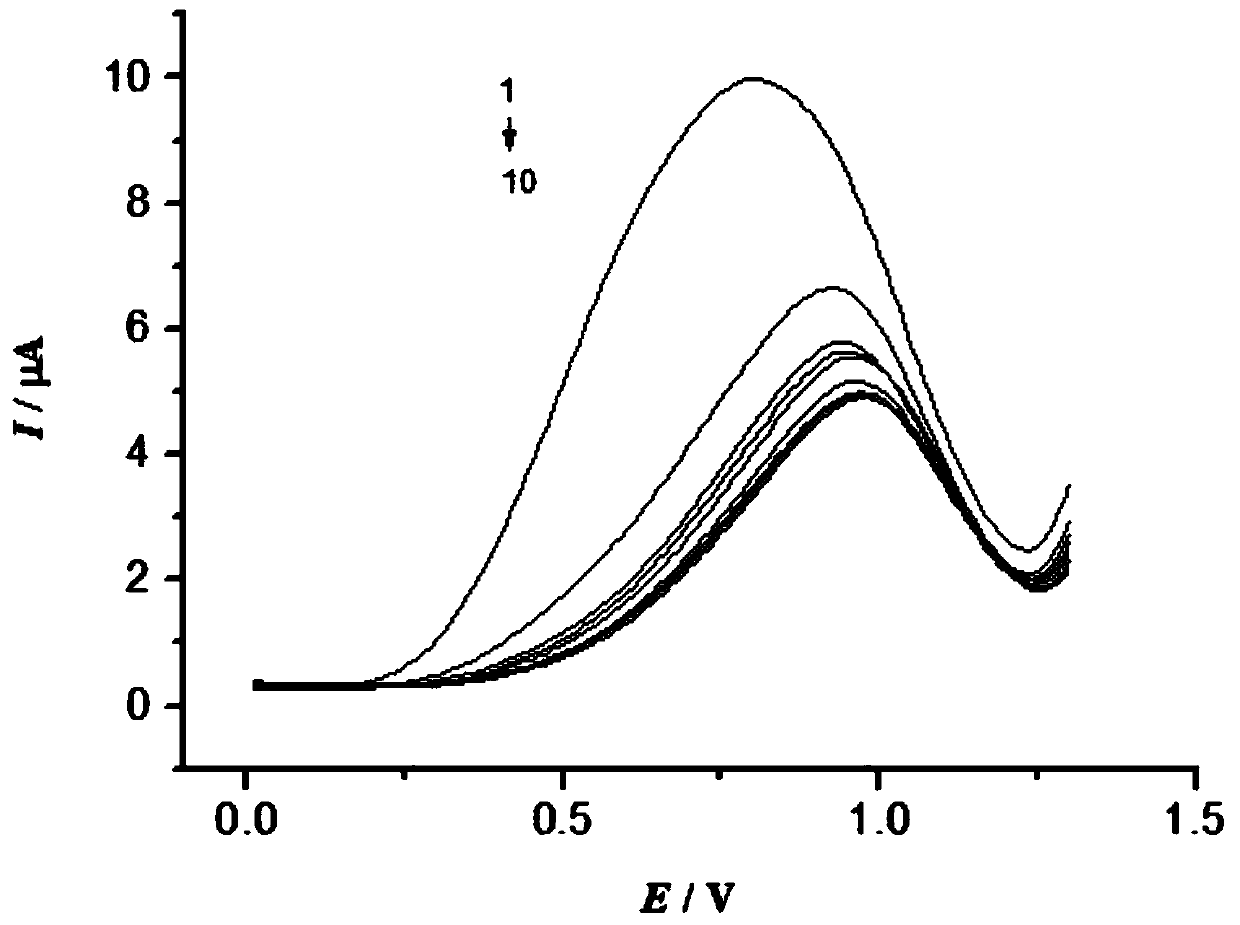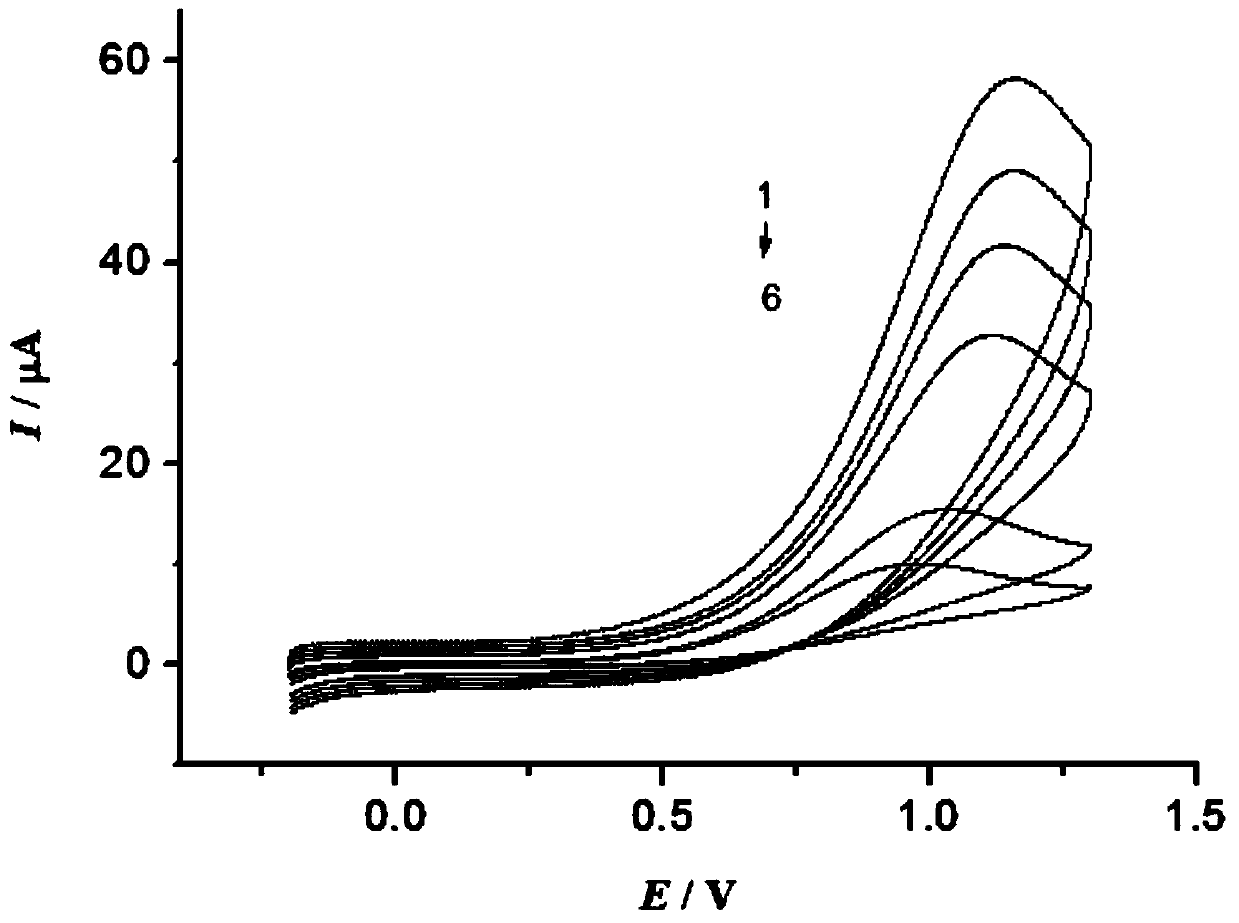Electrocatalytic detection method of hydroquinone
A hydroquinone and detection method technology, which is applied in the field of electrocatalytic detection of hydroquinone, can solve the problems of high price, complicated process, passivation, etc., achieve good stirring and mixing effect, simple operation, and low detection limit Effect
- Summary
- Abstract
- Description
- Claims
- Application Information
AI Technical Summary
Problems solved by technology
Method used
Image
Examples
Embodiment Construction
[0032] The technical solutions of the present invention will be clearly and completely described below in conjunction with the embodiments. Apparently, the described embodiments are only some of the embodiments of the present invention, not all of them. Based on the embodiments of the present invention, all other embodiments obtained by persons of ordinary skill in the art without creative efforts fall within the protection scope of the present invention.
[0033] see Figure 1-10 Shown, a kind of electrocatalytic detection method of hydroquinone, the detection method of this hydroquinone comprises the following steps:
[0034] S1. Prepare 0.01mol / L tris buffer solution, 0.2mmol / L hydroquinone solution, 0.2mmol / L [Ru(bpy) 3 ] 2+ solution, 0.10mol / L sodium chloride solution;
[0035] S2, get 0.2mmol / L hydroquinone solution and 0.2mmol / L [Ru(bpy) 3 ] 2+The solutions are mixed to obtain mixed solution a, 0.2mmol / L hydroquinone solution and 0.10mol / L sodium chloride solution ...
PUM
 Login to View More
Login to View More Abstract
Description
Claims
Application Information
 Login to View More
Login to View More - Generate Ideas
- Intellectual Property
- Life Sciences
- Materials
- Tech Scout
- Unparalleled Data Quality
- Higher Quality Content
- 60% Fewer Hallucinations
Browse by: Latest US Patents, China's latest patents, Technical Efficacy Thesaurus, Application Domain, Technology Topic, Popular Technical Reports.
© 2025 PatSnap. All rights reserved.Legal|Privacy policy|Modern Slavery Act Transparency Statement|Sitemap|About US| Contact US: help@patsnap.com



